Note: this is an in-depth review of the film that has a number of spoilers. First-timers may want to skip to the technical specs.
It's not accurate, of course, that title. As any devotee of the early films of John Carpenter will doubtless know, the assault in question takes place not in Precinct 13, but Precinct 9, Division 13. But then this wasn't Carpenter's original title – the script, written under the same pseudonym Carpenter used as editor on the final film, was titled 'The Anderson Alamo', and 'Assault on Precinct 9' doesn't have quite the same ring. Not that this matters. The specifics of the location are of little importance, but what happens and who it happens to most certainly is. That we're in a run-down quarter of Los Angeles is not even an issue – Carpenter is not making a political statement, he is making an urban western. And it's a rare and genuinely wonderful thing. It's thus no surprise that, in the manner of Hollywood creative vacuity, some witless bugger would decide to remake it and change the plot and characters just enough to make you wonder why they didn't just ignore the original and make their own damned movie in the first place (I'll tactfully choose to ignore the fact that Carpenter himself did likewise in 2001 with the dispiriting Ghosts of Mars). Then again, Carpenter's original is essentially an update of two earlier movie classics, but one of the triumphs of Assault on Precinct 13 is that despite being ten per cent Hawksian western and ten per cent Romero zombie horror, it's still eighty per cent pure, undiluted Carpenter at his most thrillingly creative and deliciously entertaining.
My relationship with this film is a long-standing one, going all the way back to my film school days in the late 1970s. Dark Star had received its UK premiere on TV over the Christmas break, but I missed it because I'd managed to get a ticket for the third night of a little film called Star Wars at a huge London cinema that sadly no longer shows movies at all. I'd read all about Assault and was utterly intrigued, as at a time when the director-led films of Hollywood's new young Turks were re-writing the rules on a week-by-week basis, here was a film that critics were calling 'old fashioned' with no whiff of irony or condescension.
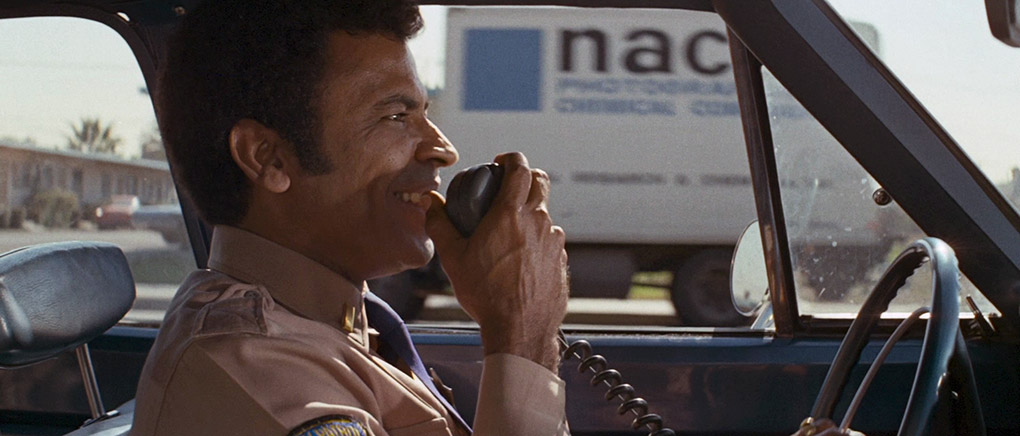
I first saw the film at a London cinema that back then was called The Sherlock Holmes Centre (try to guess in which road it was located). It was without question the smallest legitimate cinema in which I have ever watched a film, but by the time I walked back out into the daylight, a spring in my step and a beaming smile on my face, I couldn't have cared less. I ended up seeing the film over thirty times at the cinema and writing my film school dissertation on the first four features (three for the cinema, one for TV) by this exciting new young hopeful. Of course, there can be precious few true film fans who are not well versed now in the cinema of John Carpenter, and while a number of his films have achieved cult classic status, for a whole host of probably personal reasons, Assault on Precinct 13 remains to this day my favourite.
The film begins with a small group of gang members being violently gunned down by faceless police officers. In normal circumstances this would align us with the victims, but in the very next scene we hear a radio report warning of the growing threat of gang violence and the worrying theft of a consignment of automatic weapons, which are shown to have fallen into the hands of a multicultural street gang known as Street Thunder. Then, as a quartet of Street Thunder warlords swear a blood oath, four seemingly disconnected stories unfold that are destined to collide through a single, random act of violence: young Kathy is being driven across town by her father in the hope of persuading her ageing grandmother to move out of her ghetto home and live with them instead; world-weary Detective Starker has landed the job of transporting three prisoners to Death Row, including notorious multiple murderer Napoleon Wilson; an ice-cream van is touring the neighbourhood and selling its wares; and on his first day in his new job, freshly promoted Lieutenant Ethan Bishop is assigned to babysit a remote and sparsely staffed police station that is in the final stages of relocation.
Chance events cause these story strands to interact. When one of Starker's prisoners is taken seriously ill, the prison bus in which he is being transported is forced to stop at the very station Bishop has just taken temporary charge of, and the prisoners are placed in the holding cells while Starker unsuccessfully attempts to contact a police doctor. Elsewhere in the district, the four Street Thunder warlords begin cruising the neighbourhood with the stolen weapons looking for someone to randomly kill. Drawn to the jingle of the ice cream truck, they initially threaten its driver, then coldly gun down Kathy when she innocently returns to the van to query her purchase. When her mortified and half-crazed father chases the gang and guns down his daughter's killer, he is pursued by the gang and takes refuge in Bishop's police station, by when he is in an uncommunicative state of shock. When the building subsequently comes under attack, the occupants of the station are forced to cooperate and do battle with an ever-growing army of suicidally determined gang members who have laid siege to this isolated station.
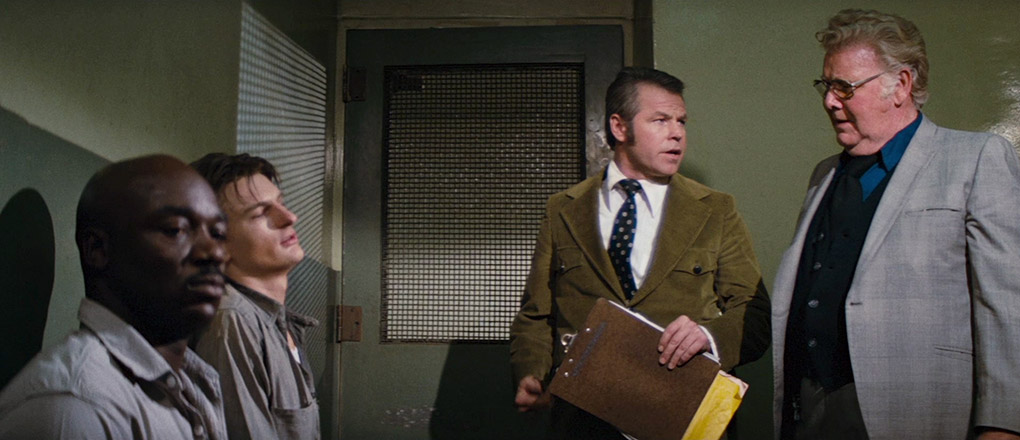
Carpenter's second feature came about when he was approached by backers with a budget of $200,000 to make the film of his choice. He wanted to make a western, but with the genre having long since fallen out of favour with the viewing public, he elected to transpose its codes and conventions to a modern urban setting (an approach also taken by director Katherine Bigelow for her 1987 vampire tale Near Dark for the very same reason). It's a risky strategy, but by keeping his characters and story development just one step away from the reality such a setting would usually demand, he provides us with all the information we need on how to read the film and its characters from an early stage. The multi-racial mix of the gang, their almost complete lack of vocal communication and the sheer cold viciousness of their first kill all serve a very specific purpose, to mark them as the bad guys and give an audience little opportunity to identify with them on a personal, cultural or social level – these people are a collective killing machine with no obvious cause or motivation and are clearly capable of just about anything.
This binary oppositional approach is deftly employed to deflect attention from the fact that one of the film's good guys – the wonderfully named Napoleon Wilson – is actually a mass murderer, an aspect of his character that is neatly sidestepped by making him witty, cynical and hugely likeable, while the specifics of and even motivation for his crime(s) are effectively shrugged off in a brief dialogue exchange with Starker on the prison bus. He is also presented from his first appearance more as a rebellious victim than a threat – his iconic introduction (a rapid track/zoom to close-up in true Stagecoach manner) has him chained in a cell, and while his captors are physically abusive or reading the rule book, Wilson makes a dry quip out of just about everything. In the yard outside, when he trips the warden up and delivers the second half of an amusing two-part verbal gag, I had to fight the urge to cheer, and I'd known him at this point for barely five minutes.
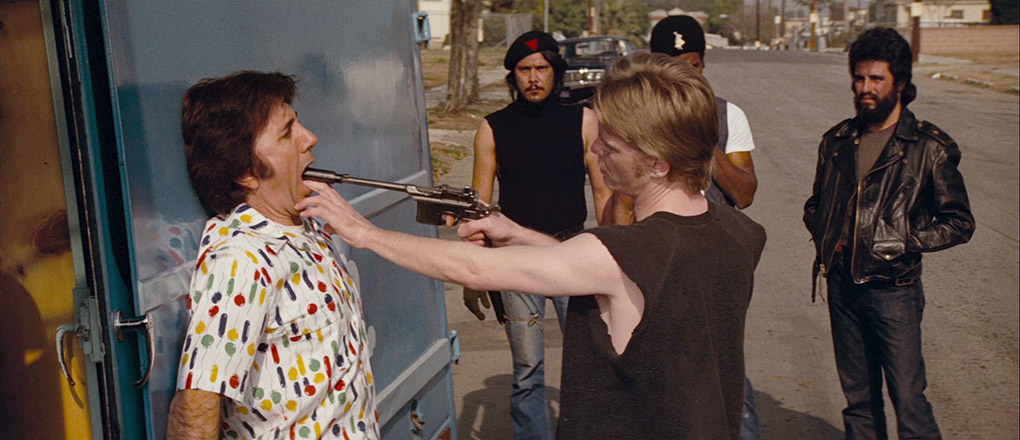
Street Thunder, in complete contrast, are presented from the moment we get a good look at them as a truly malevolent force. Carpenter's ace-in-the-hole here is actor Frank Doubleday, who despite having not a word of dialogue makes for a genuinely terrifying gang warlord (Doubleday memorably told Carpenter that he did not want to play the character not as a man who has a gun, but a man who is a gun). The sequence in which he terrorises the Ice Cream Man by calmly inserting a silenced pistol into his mouth had me cringing with terror on my first viewing, and his almost indifferent shooting of Kathy hits you like an electric shock, in part because it breaks an unspoken rule that – in American movies at least – children can be menaced but should never be killed. It's made all the more disturbing by the revelation that the scene was inspired by a real-life incident. As Carpenter himself once recalled, members of a street gang were hanging around a bus stop and one of them boasted to the others that he was going to shoot the next person that got off the bus; a young girl stepped down and he shot her and they drove away. The idea of being suddenly killed for no reason was one that really scared the young director, and the impact of this moment can be measured by the occasional walkouts I witnessed at this point in the film on its initial release, and by Carpenter's own conviction that he would never be allowed to stage this sequence today. Its importance in narrative terms is paramount, however, as it catapults the father into action and into the station where most of the film's action will take place, yet its gravity renders him unable to communicate with his helpers, leaving them in the dark over just why the building has come under attack. It also tells us everything we need to know about the gang, as if they can kill this little girl without a flicker of emotion, what quarter are they likely to give a small band of poorly armed adults?
Having introduced us to and aligned us with his main characters, Carpenter then keeps them enclosed in the police station for the remainder of the film, trapping us with them and creating an atmosphere of increasing claustrophobia that can now be seen as almost a dry run for his later remake of The Thing. Remarkably, there is no dramatic shift in tone once we are inside the station – the balance between character interplay, tension and humour stays constant throughout the film and gives rise to some extraordinary sequences that have you biting your nails one second and laughing out loud the next. A prime example of this comes during the first attack on the station, a semi-surrealistic scene in which glass, wood and paper explode as bullets rain in from a barrage of silenced weapons, which concludes with two small pops that send sheets of paper comically airborne like the contents of an indoor firework. It's an approach designed to keep the audience engaged with the characters and repeatedly throw us off guard, with even the best moments of character humour underpinned by the situational tension. This reaches a peak when one of the group needs to be selected to sneak out and hot-wire a nearby car – the sight of two hardened criminals playing 'potatoes' to see who goes and who stays is as bizarre an image for us as it is for their companions, while the comedic banter that follows never dilutes the very real fear you feel for the selected unfortunate.
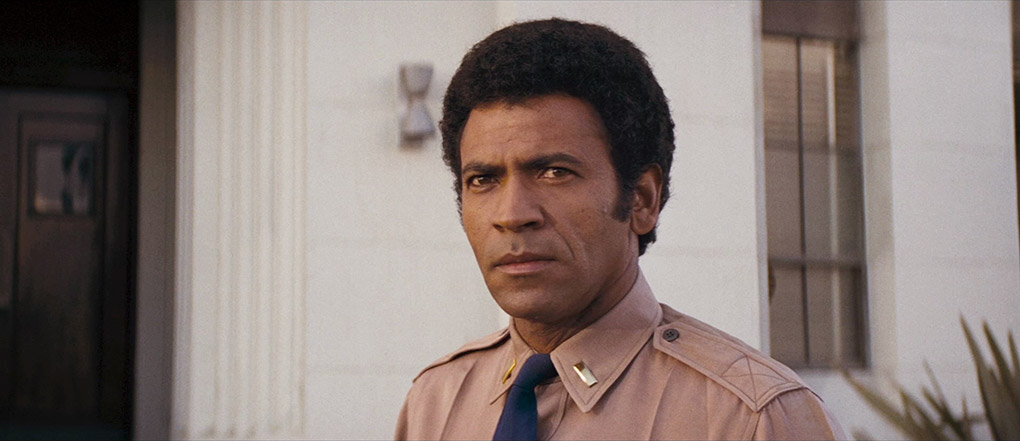
As their resources dwindle and their situation becomes desperate, Carpenter's grip as a thriller director tightens all the more, and despite the narrative inevitability of the finale, it still manages to be nail-bitingly tense. Here the film stays true to its western roots, and while Leigh emerges with strength and dignity, the finale ultimately belongs to the men. Seemingly opposites in the world of law and order, they are united by circumstance and a common purpose that has given them deep respect for each other – Bishop's furious "Get AWAY from him!" to the cop who attempts to re-shackle Wilson never fails to bring a lump to my throat.
Although the western influence is key to the film's style and feel, it is the work of Howard Hawks – one of Carpenter's favourite directors – that is most keenly felt. The plot itself is a reworking of Hawks' 1959 classic Rio Bravo, in which a ragtag group consisting of a drunken sheriff, a seasoned gunfighter, a young greenhorn and a spirited saloon girl hold up in a jail that is then besieged by outlaws attempting to free their imprisoned boss (the remake of Assault borrows more precisely from this formula, which Hawks himself reworked in El Dorado and Rio Lobo). Carpenter has never pretended otherwise, of course, signalling the connection with his editor credit as John T. Chance, the name of character played by John Wayne in Hawks' original, and by naming the female lead after that film's co-screenwriter, Leigh Brackett. But an equal, more recent influence was clearly George Romero's Night of the Living Dead, which featured a small group of mismatched individuals trapped in a house by an army of murderous zombies (here represented by the largely faceless and voiceless members of Street Thunder), a young and resourceful black leading man, and a final stand-off in the building's basement. But if Street Thunder and Bishop are drawn from Romero, then their companions are definitely from Hawks and another Carpenter favourite, Sergio Leone. While Leigh is every inch as tough and icy cool as Angie Dickenson's Feathers in Rio Bravo ("You did good," Wilson tells her in true Hawksian fashion), Wilson is as unemotional and impenetrable as Charles Bronson's Harmonica in Leone's Once Upon a Time in the West, a character who, like Wilson, also promises to reveal key information about himself only at the point of death. Rio Bravo (as well as Hawks' Red River) can also be felt strongly in one of Assault's most electrifying moments, when a shotgun is thrown and fired in the nick of time, and later in the discovery of a body through the dripping of blood from aloft. Carpenter completes the favourite filmmaker round-up with a low key nod to Hitchcock – the story Bishop tells Leigh about his boyhood trip to the police station is actually the young Hitchcock's own.
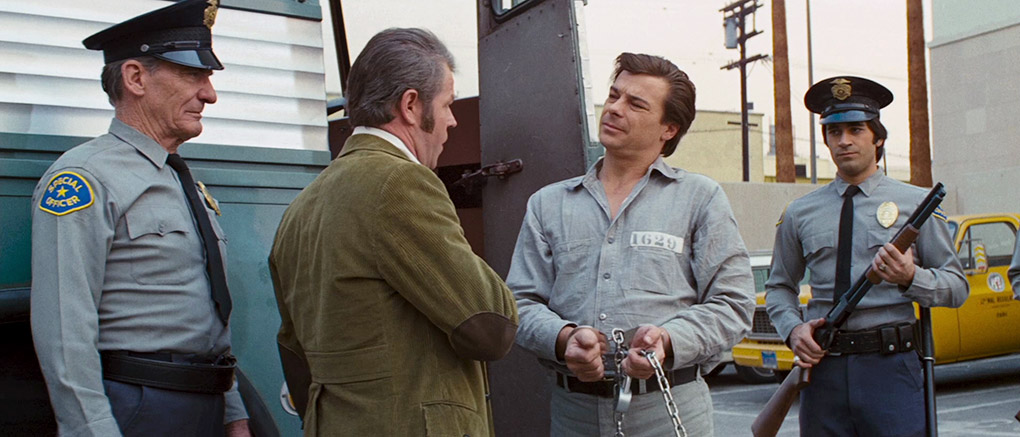
Despite his young age and the fact that he was helming only his second feature, Carpenter's confidence is writ large over every scene here, from his technical handling to his work with his impressive cast. Darwin Joston – an underused and now sadly missed actor (he died of leukaemia in 1998) whose other key claim to fame, aside from his cameo in Carpenter's The Fog, is his small role as the button-pushing Paul in David Lynch's Eraserhead – creates a wonderful antihero in Napoleon Wilson, a role Carpenter wrote specifically for him (the two were then neighbours). His laid-back cynicism is perfectly balanced by Austin Stoker's energetically resourceful Bishop, whose youthful enthusiasm and wide-eyed disbelief at what is unfolding eventually gives way to anger and focussed determination. As Leigh, Laurie Zimmer (who appeared in only three features before later becoming the subject of the 2003 French documentary Do You Remember Laurie Zimmer?, which is included on this disc) is both alluring and as tough as nails, the perfect match in every way for Wilson, which at one point casts them as a Bacall and Bogart for 1970s urban Los Angeles. Completing the group is Tony Burton (later to feature as Apollo Creed's trainer in the Rocky films) as Wilson's agitated and determinedly self-protective bus-mate Wells, the inevitable weak link who discovers bravery and self-sacrifice, but at a personal cost. Also making an impression as Starker and as frightened receptionist Julie are Charles Cyphers and Nancy Loomis, both of whom landed more substantial roles in Halloween and The Fog, and it's worth noting that Carpenter cast Henry Brandon as world weary Sergeant Chaney in part because of his role as Comanche warrior Scar in John Ford's seminal The Searchers.
Carpenter's camera placement is consistently impressive, as is Dark Star cinematographer Douglas Knapp's moody night-time lighting and often striking use of the scope frame. He repeatedly creates eye-catching shots that also have real narrative purpose: the Street Thunder car window that slowly rolls down to reveal the assault rifle whose barrel is topped by an elongated silencer, which conveys the threat the gang represent in a single extraordinary image; the long lens shot of Kathy's father seemingly trapped in a phone booth as the gang car passes malevolently on the other side of the frame; the poster shot of the hesitant Wells emerging from the manhole as his companions look nervously on; the scurrying figures that surround the station, the screen width serving to exaggerate their numbers; the smoke that clears to reveal three figures desperately brandishing improvised weapons... the list goes on. Despite (or perhaps because of) the fact that this was his first experience with the 2.35:1 aspect ratio, Carpenter all but ignores the once commonly held view that you cannot cut scope footage at the same pace as regular widescreen or Academy ratios. Indeed, the film was featured in a BBC Moving Pictures article on the CinemaScope ratio as an example of a film that had finally broken this rule, though in order to do so the programme makers conveniently ignored Lou Lombardo's lightning editing work on Peckinpah's game-changing The Wild Bunch seven years earlier.
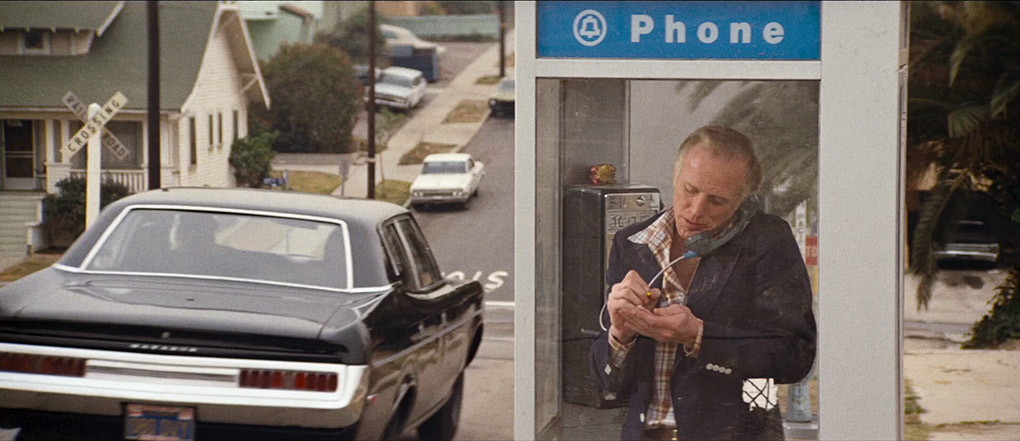
Memorably underscoring the action throughout is Carpenter's own brilliantly simple and effective score, a hypnotic blend of rhythmic ticking and clacking and deep bass synthesiser that I still find myself humming when driving through town (maybe that's not such a good thing, given what it represents). Carpenter repeatedly links the main theme to Street Thunder, sometimes to announce their arrival in frame and departure from it, which is particularly effective when the car is circling the ice-cream van like a hungry black shark – when it disappears over a hill and the music fades with it, we are given momentary (and deceptive) reassurance that the vendor and his young customer are safe from its bite. The music has remained an iconic component of the film's identity, and in 1988 found a new audience when it became the basis for the top ten hip-hop single Megablast by Bomb the Base, which in turn was featured on the soundtrack for the Bitmap Brothers' hit Amiga video game Xenon II. This recycling seems only appropriate given that the original main theme was inspired by a combination of Led Zeppelin's Immigrant Song and Lalo Schifrin's score for Dirty Harry.
My first experience of the film was a revelatory one, and countless viewings later I still delight in its humour, its characters, the way it tells its story and the sheer skill with which it is assembled. And all these years and viewings down the line, only one thing in the whole film continues to bug me. After Wells has made his attempted departure through the sewer hatch, Leigh asks Wilson why he didn't take off down the sewer in the other direction. As a character moment this works well, as it gives Wilson the chance to display an inner nobility and let his developing feelings for Leigh flicker to the surface (though it is to Carpenter's credit that this is as near as they come to actually admitting what they feel for each other), but I remain to this day bothered by just one small revelation in that exchange: the sewer had another exit? Then why the hell did Wells risk life and limb crawling out of a manhole and exposing himself to the wrath of the gang when he could have skipped unseen in the other direction and emerged from a manhole cover that did not have fifty guns pointed at it? Ah, who cares? It was a bloody marvellous film back in the late 1970s and its still a marvellous film today. Assault on Precinct 13 manages the rare trick of effectively borrowing from two classic movies without ever feeling like a remake, and time has ensured that it has, like its noble predecessors, achieved fully deserved classic status of its own.
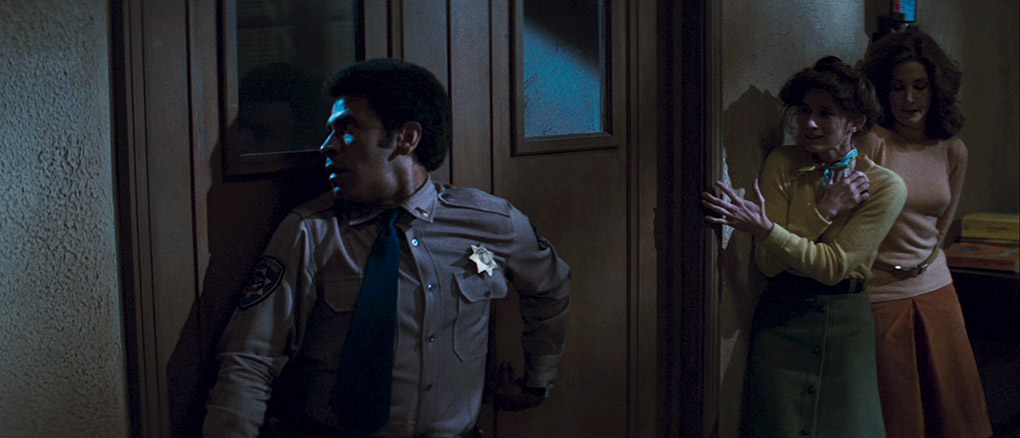
Surprisingly, the film failed to make an impression on its initial American release and was met with largely middling reviews, but following a triumphant screening at the London Film Festival (where it received a thunderous standing ovation), it found considerable favour in Europe and especially the UK, and its success here eventually spread back to the US. Carpenter had first attracted the attention of the Assault investors through the sale of his script Eyes, which was eventually made as The Eyes of Laura Mars, a film that he was originally slated to direct until the script was bought by singer turned actor Barbara Streisand and her producer husband John Peters. The story revolved around a female photographer who begins to experience visions in which she sees through the eyes of a murderer in the act of killing as he gradually closes in on her – in Carpenter's version the killer remained an anonymous threat, but in the eventual rewrite by David Zelag Goodman, he was turned into someone that the victim knew personally, cluttering an exquisitely simple notion with unnecessary emotional baggage. Though he lost out on this one, Carpenter was able to realise his vision of a resourceful woman stalked by an anonymous killer (and pay homage to Hitchcock at the same time) in his compelling and too-little-seen 1978 TV movie Someone's Watching Me (aka Highrise), but it was his made-for-cinema twist on the tale of later the same year – a little film called Halloween – that really put him on the map. He followed this with Elvis: The Movie, which on its first screening became the most watched TV movie of all time. The rest, as they say, is history.
Assault on Precinct 13 is one of those films whose transfer quality appears to have been steadily improving over time. I shudder at the memory of the shoddy cropped 4:3 print that I once caught on TV, but was also depressed by the early Universal UK DVD release, on which Douglas Knapp's carefully famed scope compositions were cropped to 1.78:1. The 1997 US Image Entertainment Special Edition DVD release, which had no regional coding and was the first DVD I ever purchased, was a significant improvement, boasting a clean 2.35:1 (albeit non-anamorphic) transfer lifted from their laserdisc release of the same year. This was fine when I had a 28” 4:3 CRT TV, but didn't look quite as spiffy when I moved up to widescreen and had to enlarge the NTSC picture to fit. Thus Image's 2003 Special Edition re-release was a seriously welcome upgrade, including as it did an anamorphic transfer, plus the Carpenter commentary and the isolated score from their earlier laserdisc release, plus a couple of other nice extras to boot. A year later Contender re-released the film on DVD in the UK, this time in the correct aspect ratio but with none of the worthwhile extra features from the Image Entertainment disc. With all that in mind, this new Blu-ray from Second Sight represents more than just an HD upgrade, at least for UK based fans of the film. I'll get to why in the special features below.
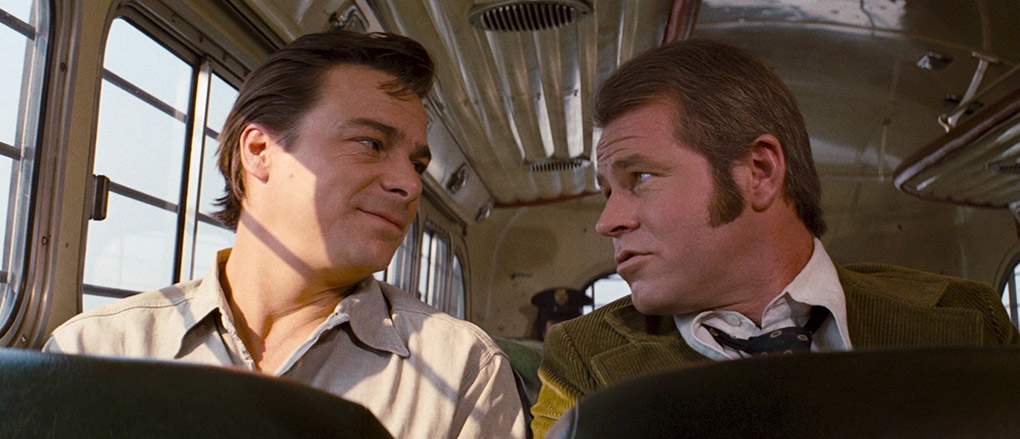
Make no mistake, the 1080p HD transfer here is as good as I've seen the film look outside of the cinema – the level of picture detail far exceeds that of even the most polished DVD transfer, and at its best the contrast is perfectly pitched and the naturalistic colour palette is most attractively rendered. The warm hues of the police station interior before the lights are cut are nicely captured without over-saturation, as are the cooler blues of the shots lit by exterior moonlight or street lights. That said, there is some variation in the contrast once the light levels drop, sometimes on a shot-by-shot basis, which does see black levels occasionally soften to dark grey. This appears to be down to the condition of the material used for the restoration that was the basis for this transfer, an assumption I'm basing partly on a POV binocular shot of two members of Street Thunder, where the blacks are a little greyed out on the image of the gang members but absolutely solid on the binocular matte that frames it. This assumption is given further weight but a short but marked drop in quality when Leigh rushes into the cells to free Wilson and Wells, which suddenly improves (in a manner that emphasises how good the rest of the transfer is) immediately after Wilson breaks the arm of one of the gang. The image is also clean throughout, with little trace of any former dirt or damage or the compression artefacts visible on the DVD transfer.
The original mono soundtrack is available in Linear PCM 2.0 and is clean and clear, albeit without the brightness or bass punch of a modern digital mix. But wait, there's more. Also included on this release is a DTS-HD 5.1 surround remix, and for the most part it really delivers, adding some serious bass punch and additional clarity to Carpenter's main theme and the throaty roar of cars, and giving the soundtrack as a whole a greater richness. There's just one thing, and I can't testify to how widespread this is, but there appears to have been a small bit of tinkering with the sound effects, or perhaps just one of them. The moment in question (spoiler warning if you've skipped the review and still haven't seen the film) comes when Frank Doubleday's White Warlord coldly shoots Kathy through her ice cream cone. It's a shock moment emphasised on the original soundtrack having the silenced pistol sound effect drowned out by a sharp hiss. This appears to have been all about delivering an audible jolt, as the two subsequent shots that the Doubleday empties into the Ice Cream Man are accompanied by standard movie silenced pistol thuds. Yet on the 5.1 track, the shot that kills Kathy is accompanied by the same silenced pistol sound effect used for the two shots that follow, and the previously loud hiss is barely audible here. In theory this should take the edge off the film's single biggest jolt, but thanks to the increased volume and bass of the sound effects here, it's actually even more jarring than it was before. If this was the only soundtrack option on offer I'd be on my purist high horse, but the mono original is still there if you prefer it, and I don't actually know who was responsible for the remix, so don't want to start making accusations about messing with other people's work in case it was carried out with Carpenter or Wallace's full approval or even involvement. Either way, I really liked the remix and have selected it almost every time I've run the Blu-ray, as much for what it does for the music as the sound effects.
Optional subtitles for the deaf and hearing impaired are also on offer.
Second Sight really have delivered here, bringing together almost all of the extra features from the previous Image Entertainment disc, licensing some of the best ones from the recent Shout Factory US Collector's Edition Blu-ray and including a couple of really choice features unique to this release.
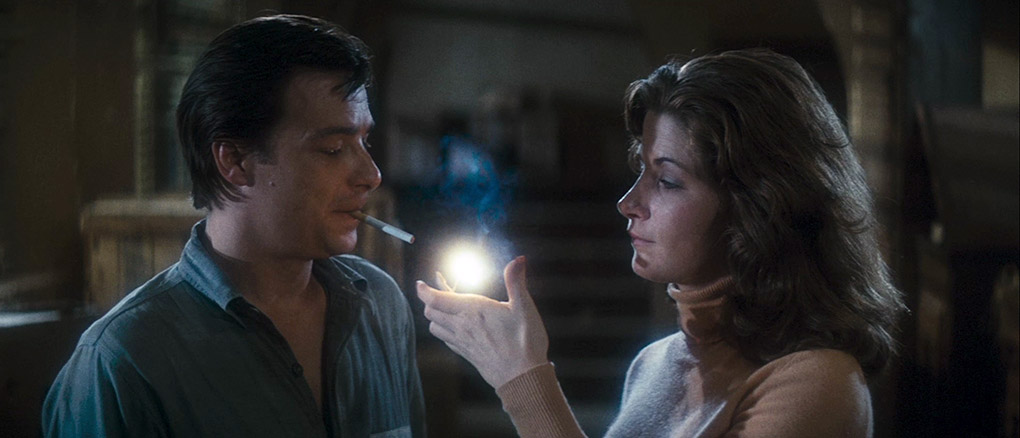
Audio Commentary with writer and director John Carpenter
This commentary by director John Carpenter goes back quite a way, having originally been recorded for the 1997 Image Entertainment laserdisc and later recycled on the same distributor's 2003 Special Edition DVD. As anyone familiar with John Carpenter commentaries will know, his are some of the most informative and enjoyable around, and this solo early one for Assault is no exception. He covers a lot here, including influences that shaped individual scenes and the specifics of their filming (Bishop's arrival at the station is particularly illuminating, utilising as it does four separate locations and a sound stage), the involvement of crew members and friends in minor roles, and the technical aspects of shooting and editing. Having had to research for almost six months and end up with a bibliography that was spread over three pages for my film school dissertation, it was somewhat disconcerting to hear much of that legwork covered in this one commentary alone, but for those who have not read any of the many articles that have been written since on Carpenter and this film, this really is a first-rate introduction. What surprised me the most is how often the director claims he would speed up the film if he was making it today, something I'm guessing that precious few of its fans would want to see, though he does counter this at one point by admitting that the film actually benefits from not assaulting the audience with action from the off.
Audio Commentary with Art Director and Sound Designer Tommy Lee Wallace
DVD producer and filmmaker Michael Felcher plays host to the film's art director and sound designer Tommy Lee Wallace, Carpenter's friend since childhood and later a film director in his own right. A lot of ground is covered here, with specific emphasis on the construction of the main set and the sound design and editing (this makes sense), but there is also some interesting discussion on the film's low-budget catering, the rise of the committee approach to action filmmaking, the remakes of Carpenter's films, Wallace's own directorial career, the ideas and themes that appeal to him as a filmmaker (which he illustrates with his difference of opinion with Carpenter on how their script for proposed western El Diablo should end), and a good deal more. There's also some revealing coverage of the process of rethinking and shooting extra footage for The Fog after Carpenter was unhappy with the first edit, which Wallace believes showed "enormous courage." Another fine supplementary feature.
Return to Precinct 13: An Interview with Austin Stoker (9:28)
A welcome interview with the film's talented and affable lead, who recalls his early determination to become a movie actor, meeting John Carpenter through Darwin Joston (the two actors were in the same drama workshop), and his work on Assault, which he thoroughly enjoyed making and still regards as possibly his favourite film acting experience.

Filmmaking with John: An Interview with Tommy Lee Wallace (21:41)
It was almost inevitable that this interview with the film's art director and sound designer would duplicate some of the aspects of his commentary track above, but there are still a number of fresh stories here and expansion on some things that get only a passing mention there. The details of how they got a special deal from primo set building company Get Set for the construction of the police station interior is rather nice, and there's an interesting anecdote about how Carpenter and Dark Star collaborator Dan O'Bannon complimented each other and how O'Bannon's departure to pursue his own endeavours left a professional hole that Wallace was able to fill on Assault.
Producing Precinct 13: An Interview with Executive Producer Joseph Kaufman (15:39)
Forthright executive producer Joseph Kaufman recalls how he first got into films, how he first hooked up with Carpenter through his script for Eyes, and how Assault on Precinct 13 went into production. He is emphatic that the budget was actually $200,000 and not the $100,000 that some others have claimed (the inference is that he's talking specifically about Carpenter, but I always had that impression as well), believes the project was more technically ambitious than Halloween, and that it looks tremendous for what it cost to make (he especially credits Douglas Knapp's cinematography here). He also reveals that Carpenter was never contracted to do the score but volunteered to do so as a budgetary measure. There's plenty more, all of interest.
Captain Voyeur – John Carpenter Student Film (8:27)
Now this is a serious coup for this release, a short film made by a young John Carpenter in 1969 whilst studying at the University of Southern California School of Cinematic Arts, discovered in 2011 by the school's archivist Dino Everett and restored with funding from the National Film Preservation Foundation. The film itself certainly has the look and feel of student piece (I'm talking from personal experience here), but is still rather fun, being the tale of voyeur who dresses in white boxer shorts and a black hood and cape and peers in neighbourhood windows by night, where he's treated to a variety of colourful sexual adventures.
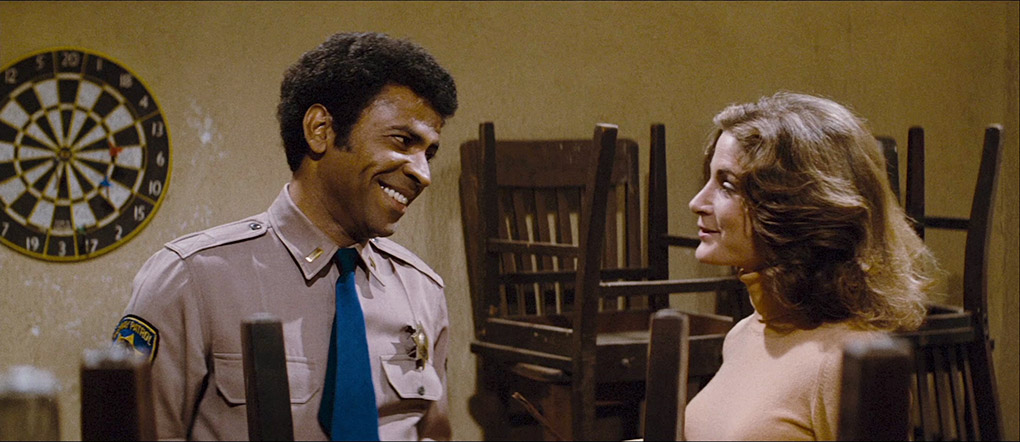
Do You Remember Laurie Zimmer? (53:41)
Coup #2 for this release, this documentary by Moroccan-born French filmmaker Charlotte Szlovak is one I first heard about many years ago but have never managed to track down. Initially having the feel of a Godard-influenced, semi-experimental piece, it soon reveals itself to be something of a detective story in which Szlovak goes in search of actress Laurie Zimmer, with whom she began an abortive film project in the mid-1970s. The process itself proves rather intriguing, involving as it does Szlovak questioning a diverse range of individuals – most of whom are not identified by name and only appear briefly as voices on the soundtrack, including Austin Stoker and John Carpenter – and parading a giant lorry around the Los Angeles bearing Zimmer's portrait and the titular question, "Do you remember Laurie Zimmer?" Personal circumstance robs the film of the punchline to which it appears to be building and occasionally it frustrates a little in its technique and pacing, but this is still an engaging journey and it's great to finally get to see it. It's in good shape too, though is windowboxed on all sides, the result of a widescreen print sourced from a 4:3 original.
Interview with John Carpenter and Austin Stoker (23:08)
Recorded in 2002 at the Egyptian Theatre in Hollywood as part of a retrospective screening of the director's works, this was shot on DV in a single take with the sound recorded using the on-camera mic, which results in occasional but inevitable clarity issues. It matters not, as this is a hugely enjoyable inclusion, largely because Carpenter himself is so effortlessly entertaining, providing engagingly light-hearted and anecdotal responses to the questions from the host and a number of audience members. The audience appears to be made up exclusively of enthusiastic fans of the film and its director, though as someone who would happily sit amongst them I have no issue with this and it's hardly surprising for a retrospective focussed on a specific filmmaker. There is also a nice variety to the questions, my favourite being the man who asks a laughing Carpenter, "How exactly do you win at potatoes?"
The Sassy One with Actor Nancy Loomis (12:44)
Actor turned sculptor and early Carpenter regular Nancy Loomis (who I would never have recognised here – even her voice has deepened over the years) recalls how she started in acting, first meeting John Carpenter and Tommy Wallace (to whom she was later married), and her work on Assault, both in front of and behind the camera. She also covers her work on Halloween ("a little bit bigger budget, a little more time to shoot, a lot more problems, a lot more opportunities," she says of it, but adds that it was "a great collaborative effort") and The Fog, where she was delighted to be filming on location and teamed with Janet Leigh, from whom she learned a lot.
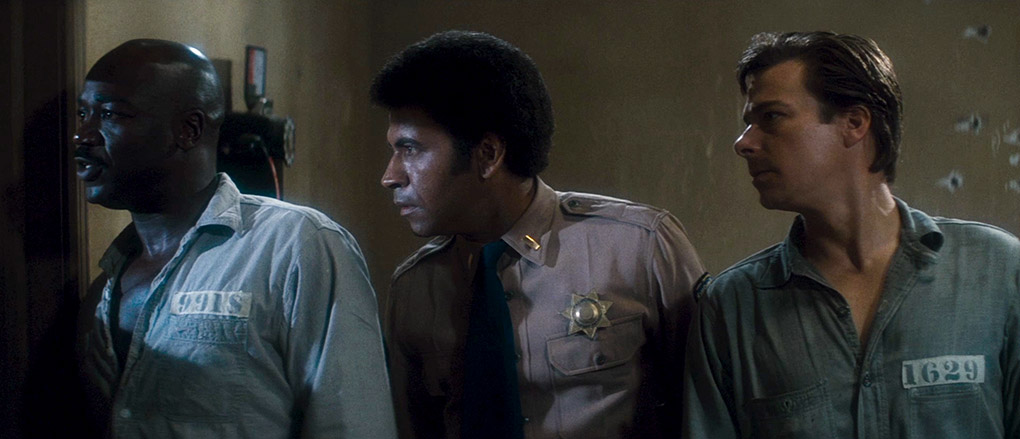
Trailer (2:03)
A po-faced trailer that pushes the film as a dark action thriller. Framed 16:9, it's in a bit of a state, though the opening blizzard of dust and scratches does ease considerably as it progresses.
Radio Spots (1:04)
Two radio spots delivered by a very serious narrator. Like the trailer above, they give no hint of the qualities that so distinguish the film.
Also included with (and restricted to) the Limited Edition Box Set will be a bonus CD soundtrack disc, which wasn't supplied for review. I'm likely to pick the release disc up anyway just to get this, so will update the review when I do.
Assault on Precinct 13 will always have a special place in my heart, for Carpenter's boldness in transposing a Hawksian western into a modern urban setting at a time when American cinema seemed to be turning its back on the past, for the bold and still shocking moment that kicks off the main plot, for its wonderfully drawn characters and hugely enjoyable performances, for its consistently witty and slyly referential script, for the sublime way it punctuates nail-biting tension with humour, for its seemingly effortless success as entertainment... I could go on. My own relationship with the film is an intimate and long-standing one – back in a time before the pause-and-freeze-frame convenience of VHS, DVD and Blu-ray, I spent many, many afternoons and evenings in cinemas watching and re-watching it, notebook in hand, memorising every shot and line of dialogue and note of music for my thesis, one that was handed in just three months before Cinefantastique delivered a John Carpenter special that would have effectively rendered months of research almost invalid and left me open to charges of plagiarism. It's thus impossible for me to be even remotely objective about the film, but then are we ever about any work of art or entertainment? I'm not alone here – there are plenty out there for whom Assault on Precinct 13 is far more than just a smartly executed exploitation thriller – many still regard it as one of Carpenter's finest films and some even champion it as his best. Its success as a cross-genre piece, meanwhile, was neatly illustrated a few years ago in the long since departed Neon magazine, when it was included on a list of their ten favourite westerns. Piss on the opportunistically minded remake – the original is terrific cinema and fabulous entertainment, and will continue to be held in high regard long after everyone has forgotten that there even was another version. If you've never owned the film then this is without question the one to buy, and even if you do have a previous DVD release, the sound and picture upgrade, together with the terrific collection of special features here, makes this and absolute must-have. Very highly recommended.
Parts of this review have been updated from or earlier DVD review of the film.
|